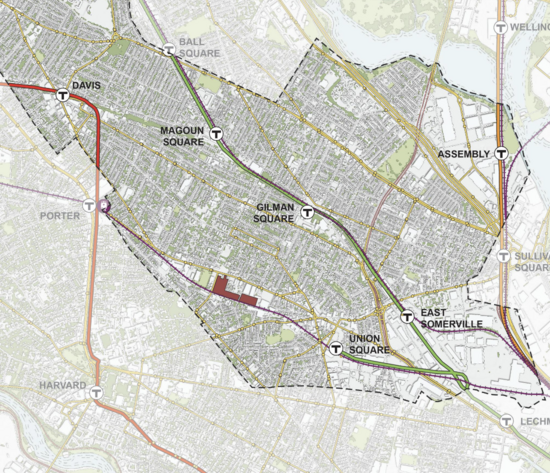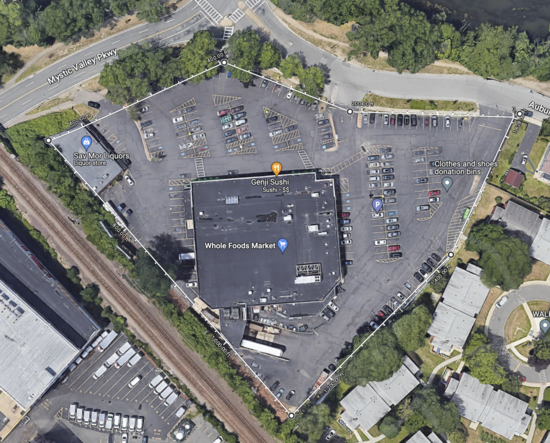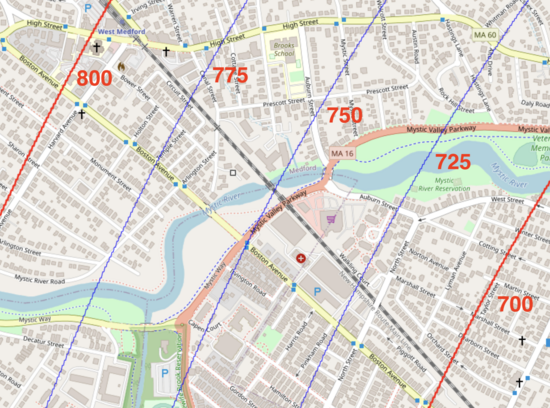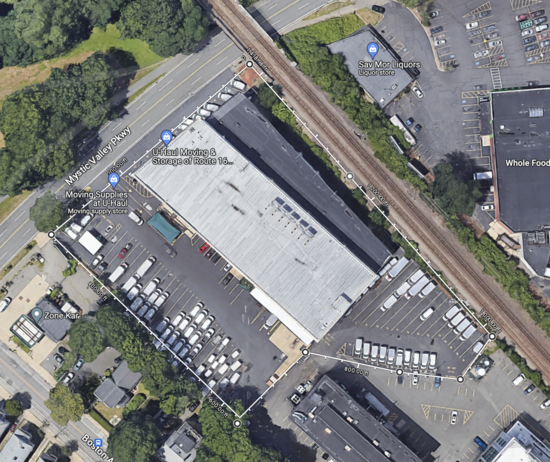Fund Transit With Development |
September 22nd, 2023 |
| housing, transit |
A different model, which you see with historical subway construction or Hong Kong's MTR, uses the increase in land value to fund transit construction. The idea is, the public transit company buys property, makes it much more valuable by building service to it, and then sells it.
While I would be pretty positive on US public transit systems adopting this model, I have trouble imagining them taking it on. Instead, consider something simpler and more distributed: private developers paying to expand public transit.
Consider the proposed Somernova Redevelopment, in Somerville MA:
This is a proposed $3.3B 1.9M-sqft development, adjacent to the Fitchburg Line. A train station right next to it would make a ton of sense, and could be done within the existing right of way without any tunneling. Somernova briefly mentions this idea on p283, where they say:
Introducing a new train station on campus could dramatically reduce commute times, making all of Somernova within a five minute walk from the station. We look forward to ongoing dialog about these transit possibilities with the community and advocates, ensuring we continue to explore all options for enhanced connectivity longterm.
This is pretty vague compared to the rest of the plan, which has a ton of estimates, but we can make our own. The MBTA recently completed a long and expensive project to extend the Green Line along this right of way, which stops at Union Square. Extending it to Dane Street would require another 0.9km of track and another station. The overall Green Line extension cost $2.2B for 7.6km, or $290M/km, though this included a bunch of over-designed work that needed to be thrown away and it should have been far less. This portion is relatively simple compared to the other work, with no maintenance facility or elevated sections, though it does include three bridges and moving a substation. Accepting the $290M/km figure, though, we could estimate $260M.
A $260M extension would raise Somernova's construction costs by under 8%, less if you include the costs of the land, and I expect would raise the value of the completed project by well more than that—rents right next to subway stations are generally a lot higher than farther away. So even though Somernova would not capture all of the benefits of the new station they would capture enough to come out ahead.
This isn't a new idea: in 2011 the Assembly Row developers made a deal with the MBTA to fund an infill station for their development. Because this was just a station it was cheaper: $15M from the developer and $16M from the federal government.
Another place where something like this could make sense is building housing at Route 16. The other branch of the Green Line Extension, along the Lowell Line, could be extended 1.4km to Route 16. Figuring the same $290M/km this would be $400M, though as a straight-forward project in an existing right of way it should be possble to do it for about half that. Next to the site is a liquor store and supermarket, about 150k sqft:
Let's say you build ground-floor retail (with more than enough room for the current tenants) and many stories of housing above it. It's not currently zoned for this, but zoning is often dependent on transit access and this is something the city could fix (ex: Assembly Square got special zoning). A hard limit on height is Logan Airport airspace but that's high enough you wouldn't come close:
The airspace rules would allow a ~65 story building, but lets say you pattern this off Assembly and go for 23 stories: 22 housing, one retail. With 75% average lot coverage (courtyards) this would be ~2.6M sqft. Building this might cost $600/sqft (but I'd love better numbers), giving ~$1.6B.
There's also a UHaul lot next door, at around 110k sqft which could be included:
Building it out the same way would give you another ~1.9M sqft at a cost of ~$1.1M, for a total of 4.5M sqft for $2.7B. Add in the subway extension and it's $3.1B.
Even with the cost of the extension this would be quite profitable: new construction right next to a subway station. Factoring in 20% for affordable housing, you break even at around $850/sqft, and extrapolating from the listings I see for Assembly you should be able to get about $1,000/sqft.
I'm not sure why we don't see more of this. Are transit agencies not very open to it? Are the costs too unpredictable? Are private developers too car-focused? Am I wrong about how much more valuable transit access makes places? Are cities unwilling to agree to high density for newly transit-served locations?
Comment via: facebook, lesswrong, mastodon



